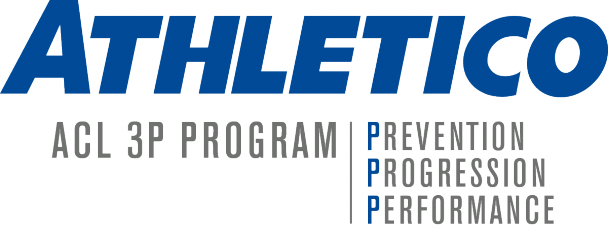3P Program for ACL Injuries
ACL Injuries
Most recent studies show that anterior cruciate ligament (ACL) tears sideline more than 200,000 athletes each year. The majority of these injuries occur while playing agility sports, such as basketball, soccer, skiing, and football. NCAA statistics show that female athletes are two to eight times more likely to sustain an ACL injury.
Physical therapists and trainers agree that ACL injuries are on the rise. This can be attributed to young athletes specializing in one sport too early, playing a single sport year-round, and the increasing pressure to compete at higher levels. A recent study reported that athletes can reduce their risk of injury as much as 72 percent by engaging in a comprehensive strength and conditioning program.
Athletes who sustain an ACL injury can get back on the field with the help of a good physician, specialized rehabilitation, and a return to play program. Athletico ACL 3P clinicians are committed to providing specialized rehabilitation for our patients, as well as customized return to play programs. Athletico strives to educate athletes and parents on the 3P’s: Prevention, Progression, Performance.
Prevention
To minimize an athlete’s risk of sustaining an ACL injury, specially-trained ACL physical therapists use proven research to help a patient strengthen muscles surrounding the knee, core, hip, and lower leg. This can help improve mechanics with sport-specific tasks, which unloads the knee’s ligaments, including the ACL.
Some of the Prevention program elements include:
- Dynamic sport-specific warm-up
- Strengthening the core, gluteus medius, and hamstring muscles
- Agility drills
- Identification and correction of biomechanical flaws
- Jumping and cutting activities
Progression
Following ACL reconstruction surgery, it is extremely important to work with a physical therapist. During this early post-operative phase, physical therapy helps the patient decrease swelling/stiffness, restore normal range of motion, and strengthen muscles around the knee, hips, and core. Typically, a physician will recommend that a patient undergo rehab for 12 weeks before entering a sports-specific performance phase.
Performance
Re-tear/re-injury rates after ACL reconstruction can be high. Up to 30% of athletes risk having a re-tear or re-injury. 20% on the opposite leg, 10% on the same leg. Thus, when an athlete has finished post-surgical rehabilitation, it is important to asses if he or she is ready to participate in sports with a limited risk of re-injury.
Returning to play used to be based on time and occur around the six month mark, literature now suggests that a criterion-based protocol be used. As part of the Athletico 3P Program, the return to play component is a collaboration of several research-based programs, customized for each patient.
The fatigue component, can help determine an athlete’s readiness to wean back into contact practices and match play.
Should deficits be identified, the physical therapist will discuss an individualized rehabilitation plan with the patient and his or her physician in order to improve the patients risk for re injury.
ACL Return to Play Program
Athletico Physical Therapy ACL 3P specialists use a combination of assessment tools, including video analysis, to evaluate the patient performing the following movements in order to gauge if the athlete is ready to return to normal sports practice and play:
- Functional Movement Screen
- Y-balance test
- Single leg hop testing
- Single leg squat test
- Depth jump to vertical jump
- Tuck jump
- Lateral hurdle hop
- Cut 45* right/left
Whether you’re interested in ACL prevention, or are in need of ACL rehabilitation, request an appointment with your local Athletico physical therapist to get started!
Find an ACL Specialist near you

